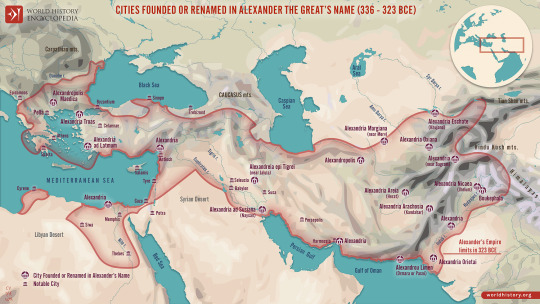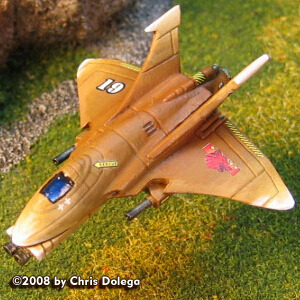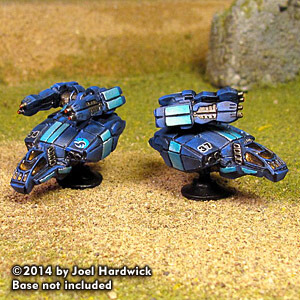#BATTLE OF HYDASPES
Explore tagged Tumblr posts
Video
SCYTHIAN-WOMEN-ART-PAINTINGS-WARRIORS-BATTLE OF THE HYDASPES-ALEXANDER THE GREAT-SLAVIC BEAUTY-ERNEST DESCALS-ARTIST-PAINTER por Ernest Descals Por Flickr: SCYTHIAN-WOMEN-ART-PAINTINGS-WARRIORS-BATTLE OF THE HYDASPES-ALEXANDER THE GREAT-SLAVIC BEAUTY-ERNEST DESCALS-ARTIST-PAINTER- At last ALEXANDER THE GREAT was able to face the Scythian warriors in the battle of the Hydaspes, true Amazons who had that kind of wild beauty typical of the Slavs of the steppes. Painting by the artist painter Ernest Descals with watercolors, seeking the expression of determination. Por fin ALEJANDRO MAGNO pudo enfrentarse a las guerreras escitas en la batalla del Hidaspes, verdaderas amazonas que tenían esta clase de belleza salvaje propia de las eslavas de las estepas. Pintura del artista pintor Ernest Descals con acuarelas, buscando la expresión de la decisión.
#SCYTIAN WARRIORS#WOMEN#WOMAN#MUJERES#MUJER#ESCITAS#ESLAVAS#ESTEPAS#AMAZONAS#AMAZON#GUERRERAS#BATALLA DEL HIDASPES#BATTLE OF HYDASPES#SALVAJES#MUJERES SALVAJES#WILD WOMEN#LUCHAR#STRUGGLE#ALEXANDER THE GREAT#ALEJANDRO MAGNO#ALEXANDROS#HISTORIA#HISTORY#SLAVIC BEAUTY#DECISION#EXPRESION#EXPRESIONES#EXPRESSION#EXPRESSIONS#ART
1 note
·
View note
Photo

Alexander the Great founded, reorganized, or re-established several towns and cities across his empire and gave most of them the name of Alexandria (more than thirty by some accounts). He also dedicated one to his horse - Bucephalus, after the elderly animal died in the Battle of the Hydaspes in 326 BCE.
150 notes
·
View notes
Text

The Phalanx Attacking the Centre in the Battle of the Hydaspes by André Castaigne (c. 1898-99)
79 notes
·
View notes
Note
Shows or movies based on historic figures and events are hard to pull off if the goals are to be both entertaining and somewhat true to history. If we accept that some inaccuracies can't be avoided in order to appeal to audiences what would you consider cornerstones and pillars about Alexander and his history that can't/shouldn't be touched in order to paint a somewhat realistic picture in media based on him and his life?
How to Make a Responsible Movie or Documentary about Alexander
I saved this to answer around the time of the Netflix release. For me, there are four crucial areas, so I’ll break it down that way. Also. I recognize that the LENGTH of a production has somewhat to do with what can be covered.
But, first of all…what story is one telling? The story arc determines where the focus lies. Even documentaries have a story. It’s what provides coherence. Is it a political tale? A military one? Or personal? Also, what interpretation to take, not only for Alexander but those around him. Alexander is hugely controversial. It’s impossible to make everyone happy. So don't try. Pick an audience; aim for that audience.
MILITARY:
Alexander had preternatural tactical skills. His strategy wasn’t as good, however, especially when younger. Tactics can be a genius gift (seeing patterns), but strategy requires experience and knowledge of the opposition. The further into his campaign, the more experience he gained, but the cultures became increasingly unfamiliar. He had ups and downs. He was able to get out of Baktria finally by marrying Roxana. That was strategy, not tactics. He beat Poros, then made a friend of him; that’s strategy. Yet he failed to understand the depth of the commitment to freedom among the autonomous tribes south along the Indus, which resulted in a bloody trek south. And his earlier decision to burn Persepolis meant he’d never fully reconcile the Persian elite.
So, it’s super important to emphasize his crazy-mad tactical gifts in all forms of combat, from pitched battles to skirmishes to sieges. Nobody in history ever equaled him except maybe Subatai, Genghis Khan’s leading general. In the end, I think that’s a lot of Alexander’s eternal fascination. He fought somewhere north of 250 battles, and lost none (where he was physically present).
But HOW to show that? What battles to put on screen? Oliver Stone combined three into one + Hydaspes because he had only 2-3.5 hours (depending on which cut you watch). The Netflix series is going to show all four of the major pitched battles…or at least all 3 for the 6-episode first part. They had circa 4.5 hours to play with, but they cut out other things, like Tyre.
Another issue, from the filming/storytelling point-of-view is how to distinguish Issos from Gaugamela for the casual viewer. They’re virtually identical in tactics (and players on the field). So it made a fair bit of sense to me for Stone to conflate them. In a documentary, it’s more important to separate them, largely to discuss the fall-out.
Some v. important clashes weren’t the Big Four. Among these, the sieges of Halikarnassos and Tyre are probably the most impressive. But the Aornos Rock in India was another amazing piece. I’d also include the bridging of the Indus River to illustrate the astonishing engineering employed. Again, if I had to pick between Halikarnassos and Tyre, I’d pick Tyre. I was a bit baffled by Netflix’s decision to show Halikarnassos instead, but I think it owed to an early error in the scripts, where they had Memnon die there. I corrected that, but they’d already mapped out the beats of the episodes, so they just kept Halikarnassos. That’s fine; it was a major operation, just not his most famous siege.
Last, I really wish somebody, someday, will do something with his Balkan campaigns. What he did in Thrace and Illyria, at just 21, showed his iron backbone and quick thinking. It’d make a great “and the military genius is born” set-up, drama wise. But you could use the Sogdian Rock to show the clever streak, at least (“Find men who can fly” … “I did; look up.” Ha) Plus it has the advantage of being where he (maybe) found Roxana.
Last, he fought extremely well--wasn't just good at tactics. Being a good general doesn’t necessarily mean one’s a good fighter. He was. Almost frighteningly brave, so show that too.
RELIGIOUS:
Ya gotta deal with the “Did he really think he was a god?” thing, and the whole trip to Siwah. I obviously don’t think he believed he was a god; it’s one of the things I disliked about the Netflix show’s approach, but they were dead-set on it. I DO think he came to believe he was somehow of divine descent, but of course, that’s not the same as most moderns understand it, as I’ve explained elsewhere. It made him a hero, not a god on a level with Zeus, and to ME, that’s an important distinction that Netflix (and to some degree Stone) rode roughshod over.
But I’d like to see more inclusion of sacrifice and/or omen-reading—religion in general. Cutting the Gordion Knot (omens!). His visit to Troy (Netflix tackled that one). A really cool thing would be to make more of the lunar eclipse before Gaugamela. Again, Netflix touched on that, but it’s one of those chance events that might actually have affected a battle’s outcome, given how seriously the ancient near east took sky omens. (A solar eclipse once halted a battle.) The Persians were freaked out. Even his massacre of the Branchidai in Sogdiana was driven by religion, not military goals. Pick a couple and underscore them.
I give Stone big props for the sacrifice before the Granikos/Issos/Gaugamela battle. It was so well-done, I’ve actually shown it in my classes to demonstrate what a battlefield sphagia sacrifice would look like.
Alexander was deeply religious. Show it.
POLITICAL:
Ah, for ME the most interesting stuff surrounding Alexander occurs at the political level. Here’s where the triumph story of his military victories all went south. He knew how to win battles. He was less good at managing what he’d conquered.
In terms of a story arc, the whole period up to Gaugamela is really the “rise” of the story. Post-Gaugamela, things began to collapse. And I would pin the turn on PERSEPOLIS. Yes, burning it sent home a message of “Mission accomplished.” But he was selective about it. Areas built by Darius I were spared, Xerxes’ were destroyed: a damnio memoriae.
Problem: Persepolis embodied Persia, and ATG essentially shat on it. Not a good look for the man who wanted to replace Darius III. That he also failed to capture and/or kill Darius created an additional problem for him. Finally, his lack of understanding of how politics worked in Baktria-Sogdiana resulted in an insurgency. Bessos was going to rebel, regardless. But Spitamanes might not have. Alexander created his own mess up there.
Another matter to look at is why he created a new title—King of Asia—instead of adopting the Persian title (King-of-Kings). I don’t think that was a “mistake.” He knew perfectly well the proper Persian title (Kshāyathiya)…and rejected it. He adopted some Persian protocol, but not all of it. After the summer of 330, he was essentially running two parallel courts, which seemed to satisfy neither the Persians nor his own men. (Kinda like docudramas are a hybrid that seems to annoy perhaps more than satisfy.)
So I’d like to see this handled with some nuance, but it’s intrinsically difficult to do—even while, if done well, it would be the most interesting part of an Alexander story, imo.
So, what events, what events…3-4 leap out after Alexander’s adoption of some Persian dress. The Philotas Affair, the Pages Conspiracy, the Death of Kleitos, the marriage to Roxana. I’d show it all, although I could also understand reducing the two conspiracies to one, for time, in which case, the Philotas Affair because it resulted in the fall of Parmenion. But the fact there were two, not just one, tells a story itself.
What about the proskynesis thing with Kallisthenes? I’ve come to disbelieve it ever happened, even though it’s symbolic of the whole problem. So, weirdly, I’m of two minds about showing it. OTOH, it won’t be in my own novels. But OTOH, I could easily see why a showrunner or director might want to include it. And it certainly appears in several of the histories, including Arrian.
Then we have the two indisciplines (mutinies)…one in India that made ATG turn around, and another at Opis. They’re really two different things as one was an officer’s rebellion, the other the soldiers themselves. But will viewers be able to distinguish between them? It’s like the Issos/Gaugamela problem, or for that matter, the two conspiracies. They’re similar enough to confuse the casual viewer. “Didn’t we already see that?”
But if they were narrowed to one, how to choose? The mutiny on the Hyphasis provides an explanation for why he turned back. But the Opis event was more dramatic. The man jumped down into the middle of a rioting crowd and started (essentially) knocking heads together! So if I had to pick…Opis. The other might could be mentioned in retrospect.
PERSONAL:
Here are five things I think really OUGHT to be shown, or that I have yet to be pleased by.
1) Philip isn’t an idiot and should get more than 10 minutes of screentime. Oh, and show Alexander did learn things from him. Stone had to make his movie a Daddy-Issues flick, and the Netflix thing did very little with Philip as they wanted to get to the Alexander-Darius face off (which was the meat of their story). But there’s a very interesting love/competition story there.
2) Olympias is not a bitch and was not involved in Phil’s murder, although I can see why that is catnip to most writers. She did kill Eurydike’s baby and (by extension) Eurydike. One of the historians in the Netflix story (Carolyn, unless I misremember) talked about the rivalry between the two wives, at least. But I think ATG planned to marry the widow and Olympias got rid of her to prevent it. Now THAT’S a story, no? But they were in too much of a hurry to get to Persia.
3) Alexander was not an only child! He had sisters (and a brother) with whom he was apparently close…and a cousin who was his real rival. To me, missing that cousin rivalry overlooks a juicy personal/political story! Too often all the focus winds up on Alexander-Olympias-Philip-Eurydike-Attalos, but man, a more subtle showrunner could do a lot with the Alexander-Amyntas rivalry. But he’s constantly cut out. I can’t think of a documentary that actually addresses Amyntas except in passing (if at all)l
4) Hephaistion’s importance is a must, but I’d like to see him treated as someone with a personality and authority of his own, besides just as ATG’s lover. At least Netflix Went There onscreen with the love-story part, but otherwise, the writers couldn’t figure out what to do with him. Neither Stone nor Netflix really portrayed him as his own person. I do understand why they can’t show the whole cast of characters. I had to do weeding myself in the novels, but I’m annoyed Netflix showed only Hephaistion and Ptolemy. Where’s Perdikkas (so important all along really, but certainly later)? Or Philotas, Kleitos, Krateros, Leonnatos, Lysimachos (later king of Thrace)? I think viewers could probably have handled at least another 5 people, especially if introduced gradually, not all at the beginning.
This brings me to….
5) Alexander’s apparently very real affection for the people in his orbit, from personal physician (Philip) to childhood pedagogue (Lysimachos [not same as above]) to Aristotle to various other philosophers. He was so loyal to his friends, in fact, he initially jailed the people who brought word of Harpalos’ first flight.
He needed to be loved/appreciated and wanted to give back to people. Yes, generosity was expected of kings, and as a king (THE king), his generosity had to excel that of anybody else. But he seemed to genuinely enjoy giving presents. I think of him like that one friend who heard you say you liked that cute pair of “Hello, Kitty” socks…then 6 months later they’re your Christmas present from them. Some of his gifts were grandiose, but not always. I love the dish of little fish (probably smelts) that he sent to Hephaistion, presumably just because his friend liked smelts!
To me, point #5 would be easy to get in with a skilled scriptwriter, tucked into the corners of other scenes. It’d be fun to highlight the personal side. If we can believe Plutarch, he was a PRODIGIOUS letter-writer. Also, he loved to hunt, so that’s another thing. And he loved the theatre, and to watch sport. These would all be very humanizing details.
I think the biggest issue is that most of these documentaries/docudramas are done by people who don’t know squat about Alexander aside from a few things, before deciding to make a documentary/movie about him, or write a book. Their research is shallow, and even if they bring on the experts, they don’t always listen. Stone DID at least have a long fascination with ATG, but it caused him to try to throw in everything but the kitchen sink. It wasn't as bad of a film as some have made it out to be, just horribly bloated and for all his reading, he never understood the WORLDVIEW. I wrote about that some while back in my review.
The best documentary/movie would be told by an actual specialist who knew enough at the outset to craft a better, more complex story arc.
Or maybe I’m just biased because I tried to do that myself in my novels. 😂😂😂😂
#asks#alexander the great#oliver stone alexander the great#netflix alexander the great#telling the story of alexander the great is intrinsically difficult#docudramas#historical movies#historical documentaries
97 notes
·
View notes
Text










New CGL Sized Hex Base & Restocks are in from Iron Wind Metals!
20-5089 Cizin Hover Tank (2) 20-5117 Kodiak II (Standard) 20-5140 Ostscout OTT-7J 20-5173 Scourge SCG-WF1 20-5187 Dominator 20-5204 Stormwolf Prime 20-5214 Jade Phoenix Prime 20-715 Jagatai Prime 20-785 Demolisher II Tank 20-885 Hermes II HER-2S 99-202 Large Flat Top Hex Base #2 99-207 Large Flat Top Hex Base #3 BT-008 Void Battle Armor BT-098 Visigoth Micro Fighter BT-104 Jagatai Micro Fighter BT-108 Tyre Micro Fighter BT-112 Sulla Micro Fighter BT-120 Sabutai Mech Scale Fighter BT-141 Hydaspes Micro Fighter BT-144 Lancer Micro Fighter BT-147 Zero Micro Fighter BT-148 Dagger Micro Fighter BT-149 Eisensturm Micro Fighter BT-152 Vandal Micro Fighter BT-168 Vulcan Micro Fighter BT-202 Rogue Bear Heavy Battle Armor BT-207 Delphyne ProtoMech BT-216 Archangel Dominus BT-239 Jump Support Infantry BT-245 Heavy Infantry - Firing BT-303 Vulture Mk III Prime BT-317 Thor II A BT-331 Phoenix Hawk LAM MK I PHX-HK1 (Mech) BT-364 Gabriel Hovercraft BT-368 Cecerops Protomech BT-369 Elemental Battle Armor (3) BT-372 Savannah Master Hovercraft BT-381 Basic Inner Sphere Battle Armor (3) BT-463 War Crow A BT-472 Wolverine WVR-7M / 7M2 / 7K FT-017 Scytha Mech Scale Fighter FT-019 Kirghiz Mech Scale Fighter 20-400D Puma "Adder" Prime Arm Sprue 20-456C Typhoon RAC Variant RAC Gun Sprue 20-727B Karnov UR Transport Rotor / Blade 20-864B Hatchetman Arm Sprue
#battletech#alphastrike#ironwindmetals#battletechalphastrike#miniatures#catalystgamelabs#battlemech#battletechminiatures#battletechpaintingandcustoms#classicbattletech#miniaturewargaming#mechwarrior#mecha#gaming#boardgames#tabletop#tabletopgames#tabletopgaming#wargaming#wargames#hobby#scifi#sciencefiction#miniaturepainting#mech#6mmminis#6mmscifi#dougram#gundam#robotech
2 notes
·
View notes
Text
Battle of. Let me.
MARATHON THERMOPYLAE SALAMIS LEUCRA GRANIKOS SIEGE OF TYRE ISSOS GAUGAMELA HYDASPES CANNAE ZAMA SIEGE OF CARTHAGE SIEGE OF CORINTH GERGOVIA ALESIA PHARSALUS PHILIPPI SIEGE OF PERUSIA ACTIUM MILVIAN BRIDGE AD DECIMUM TRICAMARUM ALL OF THE SEVERAL POITIERS BATTLES CEDYNIA GŁOGÓW LEGNICA PŁOWCE GRUNWALD WIŁKOMIERZ COURTRAI AZINCOURT VITKOVA HORA NEMECKY BROD DOMAZLICE LIPANY VARNA CONSTANTINOPLE 1453 MOHACS NOVARA PAVIA ORSZA OBERTYN THE HOLY BATORY TRINITY (POŁOCK + WIELKIE ŁUKI + PSKÓW) KIRCHOLM OLIWA KŁUSZYN BIAŁA GÓRA (I FORGOT WHAT IT IS IN CZECH) CECORA CHOCIM NO. 1 KORSUŃ ŻÓŁTE WODY BATOH BERESTECZKO/BERESTECZEK (I forgot) CHOCIM NO.2 VIENNA RACŁAWICE MACIEJOWICE
LODI CASTIGLIONE ARCOLE MARENGO AUSTERLITZ TRAFALGAR JENA PRUSSISCH-EYLAU WAGRAM BORODINO BEREZYNA LEIPZIG LIGNY-
✨️W A T E R L O O✨️
and afterwards nothing. Not that I don't know anything, but because later military history is boring as hell
Anyway this is all I remember right now. I forgot some Belisarius and I'm sad about it.
APOLOGIES
Any battle at all except Waterloo. Reblog if you can think of one!

9K notes
·
View notes
Text
The Boy Who Would Be A God (Alexander the Great)

Long before the scrolls of wisdom lined the great libraries, before empires kissed and crumbled beneath the dust of time, there lived a man named Alexander, crowned young, dreaming ancient.
It was 334 BC when the boy-king crossed the Hellespont, gazing across the sea not as a barrier but as a promise. Behind him lay Macedonia—a proud kingdom. Ahead stretched Persia—the vast, jeweled empire of Darius III. Most would have feared such ambition. Alexander relished it.
He was just 20 years old.
“Tell me, Hephaestion,” Alexander said one evening by the fire, “how many worlds do you think exist?”
Hephaestion, his lifelong friend and general, smirked. “One, my king. And you plan to take it.”
Alexander smiled, eyes burning. “No. I plan to build it.”
Gaugamela, 331 BC.
The desert was silent before the storm. 250,000 Persian warriors, chariots with blades on their wheels, elephants armored like fortresses. Against them, Alexander led just 47,000.
But war, to him, was not just force. It was chess. And Alexander, taught by Aristotle and hardened by blood, played brilliantly.
He feinted left. He drew Darius in. And then he split their center like lightning splits sky.
Darius fled. Again.
Alexander did not chase a crown. He chased legacy. And it led him east, through Babylon’s gardens, into the snowbound mountains of Bactria, and finally—India.
There, under monsoon skies, at the Hydaspes River, he met King Porus, whose war elephants crashed through the mud like gods of old. The battle was brutal. Alexander was wounded, nearly killed. But he triumphed—and honored Porus, not as a defeated enemy, but as a fellow king.
Years passed. Victories mounted. Yet as Alexander stood on the edge of the known world, he saw no joy in conquest, only emptiness. His men, weary of endless war, begged to return west. And so they did—crossing deserts so harsh that more died from thirst than arrows.
Back in Babylon, the dreamer finally paused. His empire stretched from Greece to India, his name whispered in dozens of languages. But he had no heir. No clear successor. Only ambition—and a fever.
Some say he was poisoned. Others say the gods took him, fearing he might challenge Olympus itself.
Alexander died in 323 BC.
He was 32.
Years later, when the Library of Alexandria rose in Egypt—a city he had founded—the scholars said it housed the knowledge of a thousand lifetimes.
But none more fascinating than the story of the young king who had once asked, "How many worlds exist?" and tried, with all his might, to conquer them all.
1 note
·
View note
Text

Battle of the Hydaspes aka Battle of Jhelum
1 note
·
View note
Text
More Watch : https://tinyurl.com/34dxkn3c Viral Vedio Today Battle of Hydaspes, Porus defeated the general in the battle Watch Now :https://tinyurl.com/4x5dxftm #viralbareng #sharadpawar #love #JesusisLord #Rosie #Davido #Wizkid #SteveBannon #Mandela #Flash #Wordle #RII7E_Or_NONE #BringBack #SeunghanRosie #Wizkid

#archaeology#batman#baking#artists on tumblr#bedroom#bibliophile#billford#authors#bill cipher#black lives matter
1 note
·
View note
Text
— Alexander the Great in 326 BCE after the Battle of Hydaspes.
Bucephalus is dead.
921 notes
·
View notes
Video
BATALLA-HIDASPES-ARTE-PÌNTURA-ALEJANDRO MAGNO-ELEFANTES-REY-POROS-INDIA-PAKISTAN-ACUARELAS-PINTOR-ERNEST DESCALS por Ernest Descals Por Flickr: BATALLA-HIDASPES-ARTE-PÌNTURA-ALEJANDRO MAGNO-ELEFANTES-REY-POROS-INDIA-PAKISTAN-ACUARELAS-PINTOR-ERNEST DESCALS- Acuarelas que priman el movimiento y la atmósfera, la BATALLA del HIDASPES, elefantes del Rey Poros contra la Caballería Macedonia de ALEJANDRO MAGNO, llegando a los límites del mundo para ampliar el nuevo Imperio conquistado, en su afán, el Rey de Macedonia y nuevo Gran Rey de Persia luchó en las tierras de Pakistán y la India. Pintura con acuarela sobre papel del artista pintor Ernest Descals, historia y Arte se fusionan.
#BATALLA DEL HIDASPES#BATTLE OF THE HYDASPES#INDIA#PAKISTAN#ELEFANTES#ELEPHANTS#CABALLERIA#MACEDONIA#ALEJANDRO MAGNO#ALEXANDER THE GREAT#REY POROS#KING POROS#MACEDONIAN CAVALRY#HETAIROI#BATALLAS#ARTE#ART#ARTWORK#ACUARELA#ACUARELAS#WATERCOLOUR#WATERCOLORIST#WATERCOLOR#ACUARELISTAS#PLASTICA#HORSE#HORSES#PINTAR#MOVEMENT#MOVIMIENTO
0 notes
Photo

The Hyphasis Mutiny
The so-called Hyphasis Mutiny was a conflict between Alexander the Great (356-323 BCE) and his army following their victory at the river Hydaspes in 326 BCE. Alexander voiced plans for further conquests in the Indian subcontinent, however, when his men reached the river Hyphasis, there was an open revolt. The mutiny ended with Alexander giving in to his men's wishes and turning back; he did not venture further into the Indian subcontinent as he intended. Over the years, historians have examined the importance of this moment of tension between a king and his army. This includes the issue of whether the term “mutiny” can truly apply to this incident.
The Indian Campaign
When Alexander marched across the Hindu Kush to India in 327 BC, the denizens of Bazira feared for their lives, fled to the Aornos Rock, reputed to be impregnable so that not even Heracles was able to capture it. Alexander had difficulty getting to the rock and started building a mound, then gained a foothold on a hill. When the Indians noticed the Macedonians closing in, they surrendered. Alexander placed a garrison on the abandoned portion of the Aornos Rock.
The city of Nysa asked Alexander to recognize their freedom and independence, which Alexander granted and made allies of them, acquiring 300 horsemen. He also had a base in Taxila, after promising to help Taxiles against his enemy, King Porus. Alexander met Porus at the Battle of Hydaspes in 326 BCE, which included war elephants. After the battle, Porus was allowed to continue ruling his kingdom and became an ally of Alexander, and Alexander continued to march further into India.
Continue reading...
40 notes
·
View notes
Video
youtube
Alexander the Great: The Final Stand
Join us on a historical journey with Alexander the Great as we explore his final stand. In this kings and generals documentary, we dive into the epic tale of one of the most legendary figures in ancient Grecian history. I stand at the precipice of history, a conqueror, a dreamer, a man whose name will echo through the ages. I, Alexander, have carved my path through the heart of empires, from the sun-baked plains of Persia to the lush valleys of Punjab. The Achaemenid Empire fell before me like a house of cards, its once-mighty walls crumbling under the weight of my ambition. I tasted victory at Gaugamela, the thrill of triumph coursing through my veins as I gazed upon the remnants of Darius’ forces, scattered like leaves in the wind. But here, at the banks of the Hydaspes, I find myself face to face with Porus, a king as fierce as the storms that rage across the skies. His elephants tower over my men, a living wall of muscle and might, yet I am undeterred. I have faced the fiercest warriors, crossed deserts and mountains, and still, I press on. The thrill of battle is intoxicating, the promise of glory beckoning me forward. Yet, as the clash of steel fills the air, I sense a tremor beneath my feet, a whisper of dissent among my ranks. My soldiers, weary from the endless march, their spirits frayed like old cloth, they look to me with eyes that once sparkled with the fire of conquest. Now, they speak of home, of the familiar comforts left behind, and I feel the weight of their longing. I am their leader, their king, yet I am also a man, and I understand their fears. The dream of India, of further conquests, begins to fade like the evening sun. I am forced to turn back, to abandon the vision that once burned so brightly in my heart. The world I sought to conquer slips through my fingers like sand, and I am left with the haunting echo of what might have been.
0 notes
Note
This question usually comes up framed as “did Alexander know about China?” - but what I really want to ask is: how aware was Alexander of what was to the East of his conquests?
He reached India, so he must have known that there were kingdoms / civilizations / countries that form what we presently call India as well. Was he aware of say, Tibet? Or Southeast Asia? I’m fairly certain Alexander and China didn’t know about each other, but if Alexander initially wanted to expand to the east, what did he know about it?
How Much Did Alexander Know about the East?
I suspect this changed as he moved east. The wall of the Himalayas is pretty steep. I'm not sure the route that would become the Silk Road was really open yet; it dates to the first century BCE. Alexander did encounter silk, but I believe it was in India. Silk starts popping up in the West after Alexander, although, again, some limited silk coming via Persia (via India) is older.
That said, when the army hit Marakanda/Samarkand, which was ON the later Silk Road, it's entirely possible that he'd have heard something. I doubt it would have been very clear, however.
It's really in India that he'd have heard more. After the Battle of the Hydaspes, the army hung out in Poros's lands for a bit. That's where he heard enough about the extremely warlike nations further into India--as did the army--that led to the indiscipline at the Hyphasis. In fact, some scholars have suggested Alexander actually *staged* the indiscipline, to give him an excuse to turn around. He knew he didn't have enough troops to take on the kingdoms in central India.
How much he heard about China beyond that, I don't know. It would depend on how much was known in the Punjab region.
But certainly, Alexander's army returned with a lot more information about Central Asia, and further east, than had been known before.
Strabo's Geography (Roller has the complete collection translated) is probably the best place to look. He used a number of the now-lost Alexander historians, when writing, and even evaluates the reliability of these.
#Alexander in the East#Alexander in India#Alexander in Baktria#Bactria#Poros#Strabo#Alexander the Great#asks#Classics
25 notes
·
View notes
Text
Who was Alexander’s horse?
#Alexanderthegreat #greekhistory #buchepalus June 326 B.C. Death of Buchepalus – Alexander the Great’s Horse Although Alexander won the Battle of Hydaspes and defeated Porus, he lost his horse #buchepalus. He could not sustain the injuries and lost his life.This horse had accompanied him through all his conquests and Alexander was deeply saddened by the loss of his beloved horse.Follow for more…

View On WordPress
0 notes
Text
Welcome to "Horses of Heroes", a blog dedicated to exploring the incredible bond between humans and their equine companions. Throughout history, horses have played a vital role in human society, serving as transportation, companions, and even warriors in times of conflict. This blog is particularly focused on the relationship between horses and heroes, highlighting the horses that have played important roles in the lives of legendary figures such as Alexander the Great, Genghis Khan, Joan of Arc, and many more. We'll also examine the ways in which horses have been depicted in art, literature, and popular culture, and the impact they continue to have on our society today. Whether you're a seasoned equestrian or simply fascinated by the enduring connection between humans and horses, "Horses of Heroes" is the perfect place to dive deep into the world of equine history and culture. Join us on this journey as we explore the incredible stories of these magnificent animals and the heroes they have accompanied throughout history. Bucephalus - owned by Alexander the Great A famous horse of classical history, Bucephalus was the mount of Alexander the Great. The term "Bucephalus" comes from a branding mark that shows the head of an ox on his hindquarters. Bucephalus is characterized as a huge beast with a huge head, a black coat, and a great white star on his brow. He was bred from the "greatest Thessalian strain," and he is said to have had a blue eye as well. Bucephalus was made available to King Philip II by a horse trader named Philonicus the Thessalian against a high price. Philip father of Alexander had no interest in trying to tame the beast because no one could. Given the chance, Alexander stunned everyone by controlling it. The horse's anguish had been brought on by its ability to perceive its own shadow, so he comforted it and turned it toward the direction of the sun. Alexander managed to control the horse by letting go of his flapping cloak as well. Sources claim that Bucephalus passed away at the age of thirty. However, other versions attribute the death to fatal wounds sustained during the Battle of the Hydaspes (June 326 BC), where Alexander's forces defeated King Porus, rather than old age or exhaustion. Alexander created the city of Bucephala in honor of his steed. It was situated on the western bank of river Jhelum in Pakistan. Bucephalus is supposedly interred outside of Jhelum in the contemporary town of Jalalpur Sharif. Chetak - The Horse of Maharana Pratap The horse that Maharana Pratap rode in the Battle of Haldighati, fought on June 18, 1576, in Haldighati in the Aravalli Mountains of Rajasthan, western India, was known in traditional literature as Chetak. Chetak took Pratap safely away from the battle despite being injured, but he later passed away from his wounds. For centuries, Chetak is still living in the folklore of India. Incitatus - owned by Caligula Incitatus was a horse owned by the Roman Emperor Caligula. Although it is obvious from ancient records that this did not happen, Caligula had intended to appoint the horse as a consul. The poem "Caligula" by Zbigniew Herbert is about Incitatus' life. According to Robert Graves' I, Claudius, Incitatus was appointed a senator and placed on the list to become a consul. Later, Claudius removed Incitatus' government stipend and his status as senator because he didn't meet the necessary financial requirements. Later, Incitatus was killed after breaking his leg during a race. Marengo - owned by Napoleon Bonaparte Marengo was a grey Arabian stallion owned by Napoleon Bonaparte. The horse was named after the Battle of Marengo, which was one of Napoleon's greatest victories. Marengo was said to be a fearless and loyal mount, carrying Napoleon into many battles, including the Battle of Waterloo. After Napoleon's defeat, Marengo was captured by the British but was eventually returned to France, where he lived out the rest of his days. In his career, Marengo suffered eight wounds.
He fought for the Emperor in the battles of Austerlitz, Jena-Auerstedt, Wagram, and Waterloo. He was also commonly utilized for the 80-mile runs from Valladolid to Burgos, which he frequently finished in five hours. Napoleon I of France's renowned military horse was named Marengo and lived from roughly 1793 to 1831. After the Battle of Abukir in 1799, when he was six years old, he was imported to France from Egypt and given the name Marengo after the battle in which he successfully carried his rider. Marengo is an Arabian breed that most likely originated at the renowned El Naseri stud. Copenhagen - owned by King George III Copenhagen was a thoroughbred owned by King George III of England. He was known for his speed and strength, and he carried George III into many battles, including the Battle of Waterloo. During the battle, Copenhagen was injured, but he continued to carry the king until the end. After the battle, Copenhagen retired from active service and lived out the rest of his days in the royal stables. Copenhagen was of mixed Thoroughbred and Arabian ancestry. The name Copenhagen, which honors the British victory at the Second Battle of Copenhagen, was given to the foal in 1808. After the battle, the Duke kept riding Copenhagen in parades and other formal occasions. The horse was retired to the Duke's Stratfield Saye House and spent the remainder of his long life there as a pensioner.
0 notes
